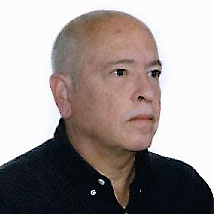Mark Poster- “Digitally Local Communications: technologies and space”
 Mark Poster is a professor of history at the History department of the University of California. His special academic interests are: European Intellectual and Cultural History; Critical Theory; Media Studies. Last year we have read one of his articles “Foucault and databases” for another one of our classes.
Mark Poster is a professor of history at the History department of the University of California. His special academic interests are: European Intellectual and Cultural History; Critical Theory; Media Studies. Last year we have read one of his articles “Foucault and databases” for another one of our classes.
For our new media theories class we’re reading literature about locative media and that’s why we are reading Poster’s article: “Digitally Local Communications: Technologies and Space”
The article can be found here:
http://www.locative.net/tcmreader/index.php?cspaces;poster
Poster starts his article by defining the three meanings of mobile communication:
- The movement of information. People stay at the same place, the information moves. Examples of these are: the telegraph or smoke signals.
- The movement of people, carrying technologies through which information is transmitted. However, this technologies are just meant for distribution, not for communication. Examples of these are: a book, portable radios or televisions, iPod etc.
- People are moving and they carry technologies that generate information while they are on the move. So these technologies are meant for communication. Examples are: GPS devices, mobile telephones, PDA’s etc.
The article focuses on the third type of mobile information and the objective of this article is to investigate the relation between the body and mobile communication technologies. These mobile communication devices change the way the body positions itself in a location. Poster states that because of mobile communication devices new local and global spaces are being created. He says:
If information moves without the human body, if media moves information to bodies, and if bodies and media move together through space: the body is everywhere and nowhere.
Critics feel that the concept of place will get lost because of this. They are afraid this will lead to losing sense of place. Places will now turn into nonplaces. Poster believes that is not so. Places will not become nonplaces, they will become more fluid. He also feels that the body and the communication devices should not be seen as opposites, but as contributing partners.
In the past the nation was the primary designator of space. Nations were created by arrangements and by conflicts that have been settled. The purpose of this was to pacify, control and domesticate populations. Because of mobile technology devices new concepts of space are created and therefore it’s hard to hold on to the old concepts. In this postmodern geography people are at various places at the same time and they may have different identities at these various places.
Space is now at once nearby and distant, local and global, but also multiple and fragmented. These places are neither non-places nor nowheres but actual spaces of mobile communications
Poster ends the article by proposing four areas that need to be researched further:
- First, we need to study the uses of mobile communications technologies, their constraints and affordances.
- Second, we need to inquire into the combination of more than one of the media, sometimes from deriving from different epochs such as a global positioning system, a wireless telephone and a wireless television in the same automobile.
- Third we must examine the shifting that occurs among users of these technologies as they deploy one then another of them or as they alternate between a medium and spoken language, sight and smell. These translations are being negotiated without instruction or tradition to guide the individual.
- Finally, we need to learn about the way mediated communications mixes with pre-existing social and cultural practices.
My powerpoint presentation: